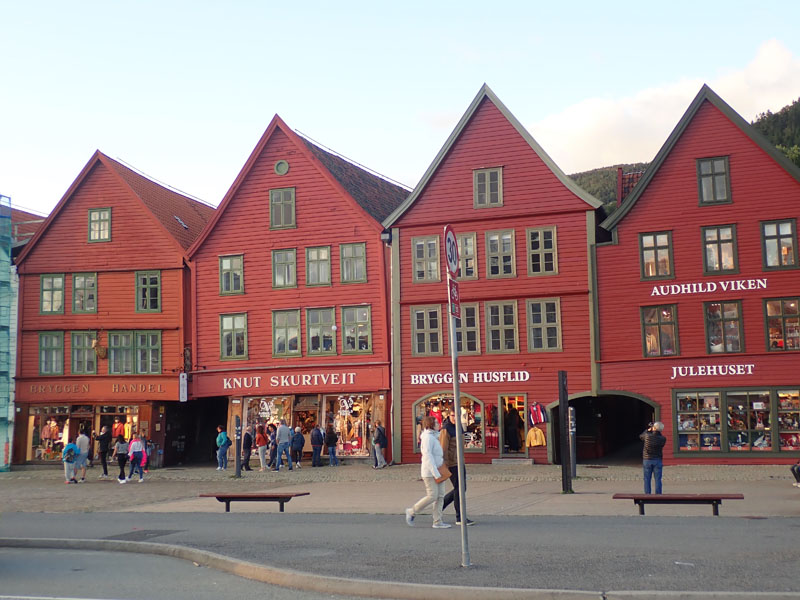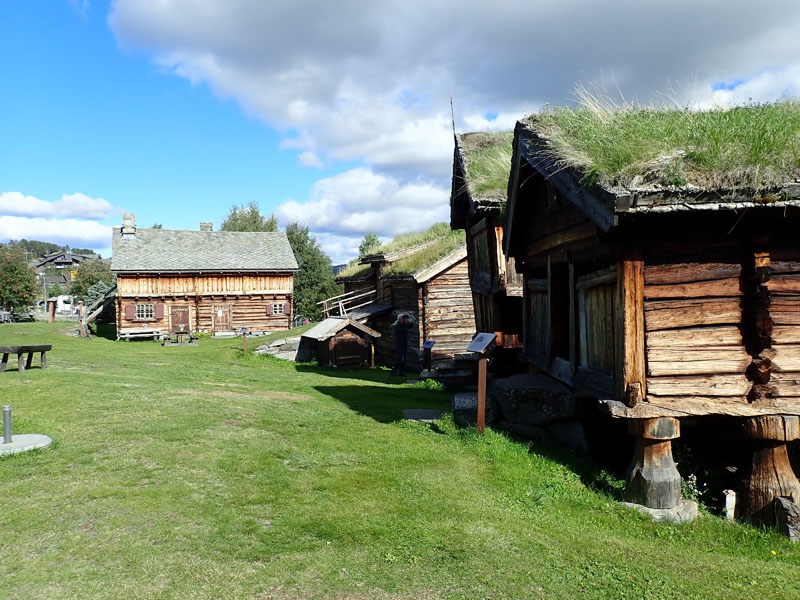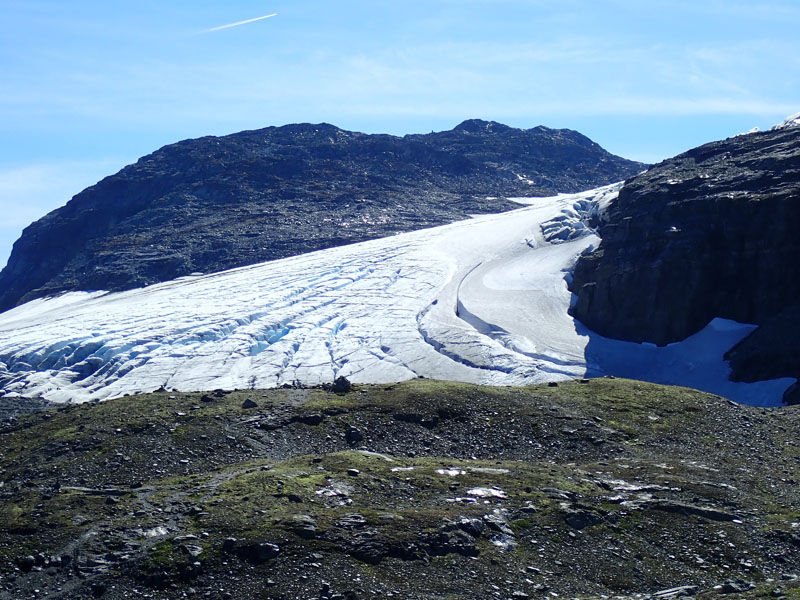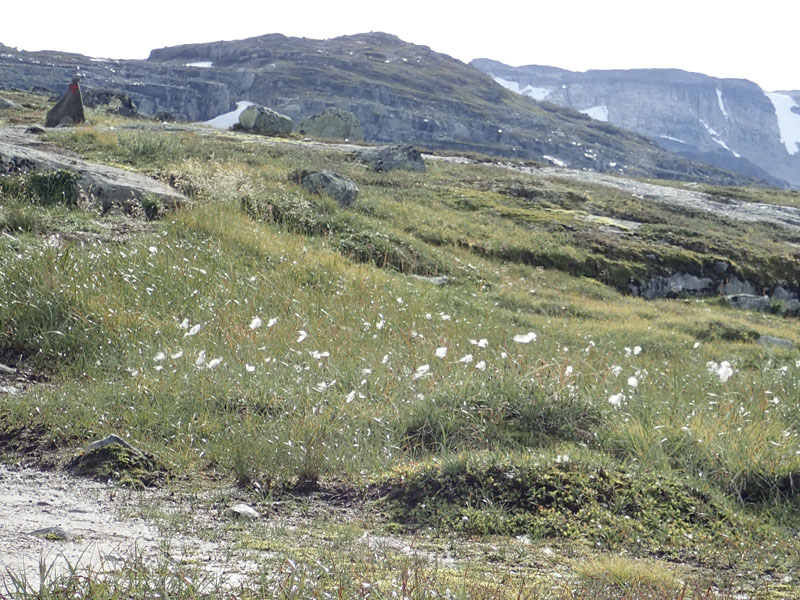It was a beautiful August day in Oslo. We were back after Hans and I spent two weeks hiking in the highlands where a highlight was walking past birch trees less than an inch tall to reach the toe of a glacier near Finse. We were then fit and ready for two full days in the city.
In the morning we went to Frogner Park. Amazingly popular, no trip to Oslo can be complete without a visit here, like it or hate it. I was mesmerized. There are hundreds of stories in the stone and brass sculptures all made by one man, Gustav Vigeland.
The statues have no name. Who they are and what they represent is entirely up to you. Some say he was a Nazi sympathiser and misogynist and I’ve heard some statues are described as homoerotic. The statues are frozen in time and have only one moment to speak for themselves. Somewhere in his supposedly hard little heart, he had room to make one of the most moving family portraits of love I’d ever seen in a couple admiring their newborn.
When the sculptures have no names, you don’t see “Man Murdering Woman” but it’s right in front of me – or is it horseplay? What is the evidence? I surveyed the area and saw three consecutive statues tell a story. I could hardly tell what was more disturbing – that I saw it or that I could easily walk by without seeing it.
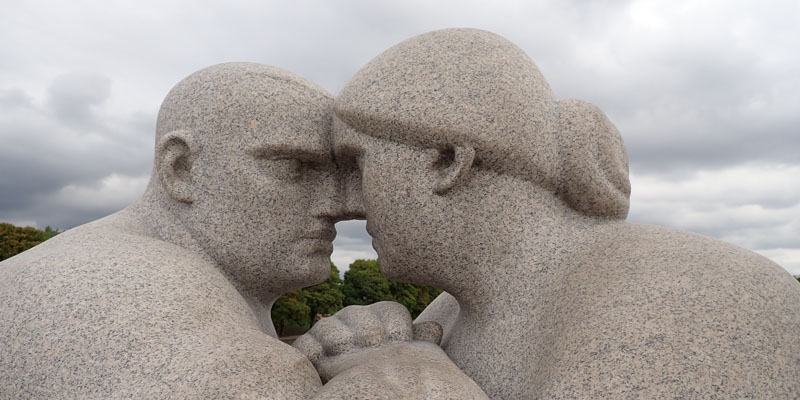
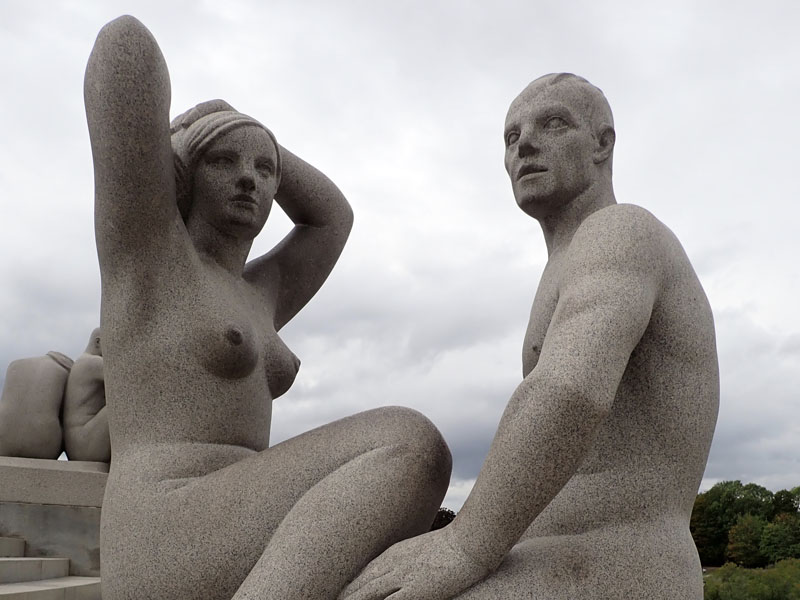
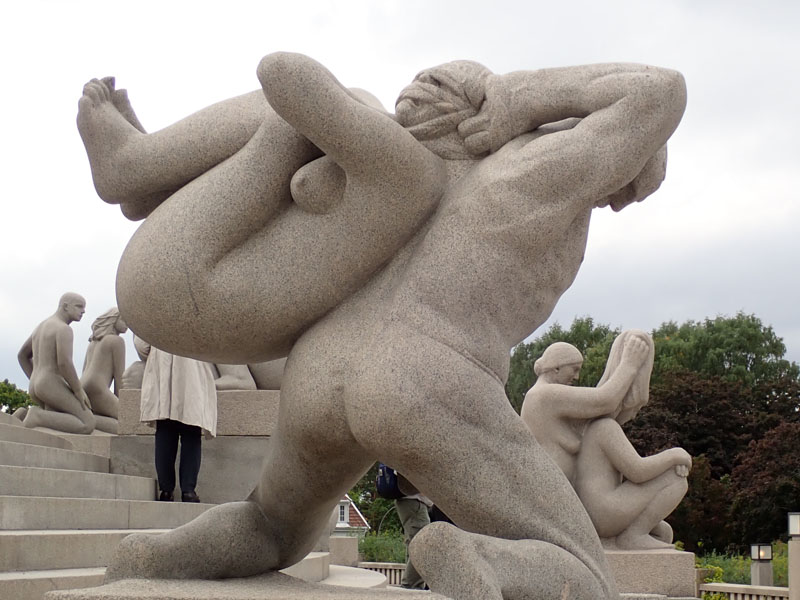
Try to visit Frogner Park early before tour buses arrive and beware the shortage of toilets.
Next we’re enjoying Oslo’s modern harbourfront, a cultural hub of restaurants and exhibitions. Oslo is a walkable city. The city welcomes people with leafy green surroundings and lots of benches to sit and gather, very fine for socializing and relaxing with a mix of sunny and shady seating. It’s great to go into the city and not feel used up at the end. Knowing this is possible, I make the plea to other cities: please give us more non-commercial seating and public toilets!
Norway is EXPENSIVE. That said, they didn’t go cheap on food. Not once did we have a bad meal. Our best pizza outside of Naples was here and the Spar in Geilo sold fare for serious cooks. Tip: for ‘affordable’ restaurants, go where the locals go. Hans and I found a local spot in Bergen that served langoustines as catch of the day that were twice the size we expected.
When shopping for souvenirs, look for Norwegian food specialties like brown goats’ cheese. Visiting supermarkets is a good way to see what’s new and different at local prices. Norwegian sweaters and trolls are world-famous. Knitters can buy a naaldbinding needle and try knitting the prehistoric way.
Home interior shops featured the most beautiful well-padded chairs and sofas inviting you to let them spoil you with comfort. Kitchen sinks came with a separate, sturdy metal rack to place to one side to increase counter space, wash fruit and veggies, or use as a cooling rack… what a great idea. We bought few souvenirs but made room for Norwegian honey and cheese bought right from a goat shed in Geilo that even had a PIN machine.
Norwegian houses exude warmth and practicality all the way from the outside in. I marvelled at one being built in Geilo with 8 – 10″ wall studs and old-fashioned craftmanship. No pre-fab concrete walls and floors here! Nothing was going to fall off this place in the wind or break down under snow. It was an ordinary everyday solid Norwegian house. On the way to the glacier in Finse, we watched materials being delivered by helicopter to another house under construction.
Our vacation included five days in Bergen. Bergen is famous for rain but we had sun and clear skies. Bergen is very much a tourist destination and it is well worth taking the train from Oslo to get there because it climbs up to the treeless highlands where you can see the glacier from the train then descends back down to lushly treed lowlands. Bergen’s historic waterfront is full of restaurants and shops and a nearby funicular can take you up to an excellent viewpoint overlooking the fjords and to hiking trails. We visited the aquarium too and took a boat tour of the fjords. For a boat trip, I’d recommend warm clothing even on a warm dry day like we had. Few people on our trip had what it took to enjoy the gorgeous view outside on deck for very long.
We spent most time in Geilo below the treeline near the foot of the Hardangervidda. Another highlight near Geilo was a Sherpa-designed trail from a cozy trekking hut with a restaurant. August can be too dicey to hike these heights but we were lucky with the weather. It was warm enough and the only snow was left over from last winter and on the glacier. There were only light snow showers at high altitude during our walk on the Sherpa trail.
Geilo itself has evidence of iron-age foundries and the presence of iron shows in the orange deposits in some streams. Well into the 1800’s farms had their own foundries for making tools. Nowadays, there is a factory for making knives in Geilo and they offer tours.
Mountain biking has become very popular in Norway and we saw many families on bikes. With all that Norway has to offer, I hope you have a chance to visit some day.
 +31 (0)50 367 71 97
+31 (0)50 367 71 97  info@connect-int.org
info@connect-int.org
